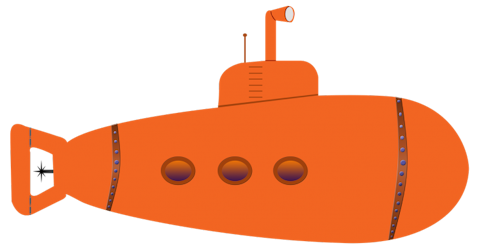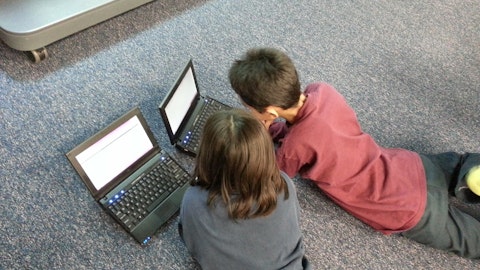There are people who can do truly amazing and fascinating experiments, and luckily for you, we created a list of 10 simple physics experiments with everyday materials to learn and impress your friends.
Not only small children, but many adults are excited and intrigued to see some kind of an experiment especially physical experiment. Today, just like a long time ago, there are people who understand and people who don’t understand the laws of physics and how they actually work. This is the main reason why people are so impressed with them and often ask “How did you do that?!”

David Pereiras/Shutterstock.com
It is interesting to try all kinds of different experiments at home to entertain yourself and your friends as well. However, despite that you can use a physical experiment to impress someone special or if you have children teaching them physical experiments and how the physics works could have a positive impact on them. For example, maybe they will get into the physics world so much they would want to explore it even more.
If you are a professor, on the other hand, you can also show these experiments to your students in a very simple but fun and interesting way. They will get the physical laws quicker and will remember them probably for the rest of their lives. Some of them will even remember how their professor passed his knowledge about physics to them and they will do the same for their children. If you are into physics, you can also check our list of 10 Winning Science Fair Projects For High School.
Keep in mind that when it comes to experimenting and playing with physics, safety comes first. Most of these simple physics experiments with everyday materials are completely safe, however, some of them are requiring an adult supervision. Don’t underestimate the power of physics and always put safety as the first step of the experiment.
In order to create our list of 10 simple physics experiments with everyday materials, we used Informit, a YouTube Video, and Little Shop of Physics as our sources to see what are the simple experiments you can do at home. The list is sorted by the number of mentions and the rankings provided by our sources. Keep in mind that sometimes you can use different materials and achieve the same result!
Now without further ado, let’s jump to our list and try to make these simple physic experiments.
10. The Submarine
Materials Needed: 2-quart plastic bottle, balloon, plastic tubing (3ft in length), silverware (3-4 table knives) and kitchen sink or pail.
In the upper and the lower parts of the bottle, make holes in 1 to ½ inches in diameter and then insert one end into the opening of the balloon. If it doesn’t want to fit snugly, you can use masking tape. After this, you need to place the knives in the bottle through the holes and insert the end of the tubing in the bottle’s mouth. Position the balloon in the middle of the bottle and your submarine is ready. Put the bottom in the sink and fill it with water until it covers your submarine.

9. Two Ball Bounce
Materials Needed: One large and one small ball and a room with a high ceiling.
This experiment is very simple and it doesn’t require any dangerous and special materials. Take the two, one large and one small ball and place the small ball on top of the larger ball. After you do this, drop the balls. Do you know what will happen to the balls after you drop them together? The two balls will separate a little. The ball which is on the bottom, the larger one will hit the floor first and while rebounding it will hit the smaller ball on the top and you will get a collision with balls of different masses. After a few bounces, the smaller ball will start to bounce higher.
8. Invisible Glass
Materials Needed: superglue, PVC pipe, a piece of paneling, 2-3 tubes of glycerin of 100ml, smooth and transparent drinking glass and an empty transparent bottle clean and try with a screw on top.
In order to make the invisible glass experiment, you need to fill the bottle with glycerin and screw the lid. After this, fill ⅓ of the glass with glycerin and place the bottle in the glass until one part of the bottle is submerged. The following steps are optional. You can superglue the PVC pipe and put it in a piece of paneling as a glass holder which will keep the glycerin from spilling over.
7. Making Water Detour
Materials Needed: a piece of flannel which is clean and dry or paper towel, stream of water, flexible plastic ruler and a party balloon.
In order for the stream of water to flow out, you need to open the tap a little bit. After you make this step, rub the balloon and the ruler against your hair. When you finish rubbing put the ruler, the balloon close to the stream. This is a very simple and easy experiment which doesn’t require any kind of special materials and it isn’t dangerous.
6. Straw Flute
Materials Needed for the experiment number 6 on our list of simple physics experiments with everyday materials: scissors, straw and a person who can blow hard.
With the scissors, cut off a tip of the straw so the both sides are the same, after you finish this step, chew the straw in order to soften the tip and to make the edges smooshed together. When you do these steps it is time for someone to take action and blow hard. If they do it right, you will hear a very loud sound similar to the flute. With blowing in the straw, the pieces are vibrating and vibration is the most important thing when it comes to making a sound. Even though you can try different instruments with this experiment, keep in mind that this is a physical, not a musical experiment.
5. Cartesian Diver
Materials Needed: Condiment packet and a two-liter bottle.
The first step of this experiment is to place the condiment packet in the bottle, fill it up to the top and screw the top. The packet needs to float and if it sinks, you will need another packet. Ketchup packets seem to work great, but it all depends on the country you live and the local air pressure. However, if the packet floats, squeeze the bottle hard for the package to sink. Mayonnaise packets cannot sink no matter how much you are squeezing. When you find the right package it will float when you aren’t squeezing and it will sink with just a little squeeze. How cool is this? Cool enough to take the fifth place on this list of 10 simple physics experiments with everyday materials.
4. Root Beer Float
Materials Needed: A can of root beer, a can of diet root beer, a large container of water and a deep sink or a bathtub.
This experiment number four on our list of simple physics experiments with everyday materials is pretty simple, the first step is to take the cans in your hands, one in the right and one in the left hand and set both of them in the large container of water. When you do that, you will notice that one of them will sink and one of them will float. If you wondered why one sank and one floated, it is due to the relative densities of materials.
3. Building Better Bubbles
Materials Needed for the number three on our list of simple physics experiments with everyday materials: water, dish soap, glycerin, something to blow bubbles and a place where you can safely blow bubbles without getting the floor all slippery.
In order to make a bubble solution, you need to mix 2 parts water one part dish soap and one part glycerin. Mix the ingredients and let it sit for a while. After this, the next step is for you to test the solution. A funnel will work fine. You can blow many bubbles with any dish soap but the glycerin is making it last longer and it makes the colors better.
2. Imploding Can
Do not try this at home without a supervision of an adult.
Materials Needed: Aluminum can, some tap water, stovetop burner, one oven mitt and a bowl of cold water.
The first step is to make sure you can do the experiment safely. You need to have an adult supervisor who will make sure it will go in a safe manner. After you make sure you will be safe doing this experiment, take the aluminum can and put two tbsp of water in it and set the can on a burner on the stove and leave it until the pop can boils. When the steam starts coming out of the can turn off the burner and take it with a mitt hand protection. You need to put the can in the bowl of water immediately when you will hear an immediate pop. And now, let’s see the number one on our list of simple physics experiments with everyday materials.
1. Bernoulli Ball
Materials Needed: Ping-pong ball, straw and someone to blow hard.
The first step in this physical experiment is to hold the straw in your mouth straight up and blow hard to make a good air stream. After you manage to do this, set the ball in the air stream and it should start floating in the stream. This experiment is known as the Bernoulli Ball and it happens because the air has a lower pressure than still air. When the ball moves to the other side it will be pushed back and it will keep floating.
This was our list of 10 simple physics experiments with everyday materials. We hope we managed to show you which are and which one to try. Keep in mind that some of them need to be done with an adult supervision.





